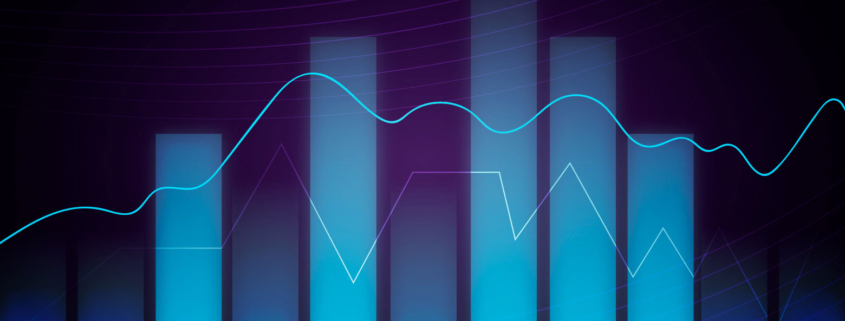Google Algorithm Updates: How to Make Your SEO Strategy Survive (and Thrive)
Google is constantly updating and improving the way its search engine indexes data and delivers information to users. Ten Google algorithm updates rolled out in 2022, with four core updates in 2023. 2024 promises to be another big year for algorithm updates.
After a major update, many websites may experience immediate fluctuations in their keyword rankings and organic traffic. Understanding how Google algorithm updates work can minimize any potential negative effects after an algorithm change rolls out.
Understanding Google Algorithm Updates
Google regularly makes a few different kinds of updates throughout the year. Many of these updates are rolled out to target specific aspects of Google search.
Here are a few examples of updates Google rolled out in the past two years that targeted specific kinds of search queries or ranking factors:
October 2023: Spam Update
In October 2023, an algorithm update overlapped with a large core update. The update identified spam content in several different languages, such as Turkish, Vietnamese, and Chinese. Since October featured both this targeted update and a broad core update, it was a volatile time for many web pages, and there were massive disruptions to SERP placements.
September 2023: Helpful Content Update
Google updated its algorithm to better identify the content that was providing helpful information to its users and better match them with appropriate answers in response to their search queries.
November 2023, April 2023, and February 2023: Product Reviews Update
Three of the updates done to the search engine this year were review updates. For these Google algorithm updates, Google adjusted its algorithm to better rank content that specifically provided a recommendation.
These updates sought to better reward high-quality reviews with a higher ranking on the search engine results pages (SERPs). They refined Google’s search for in-depth content that provided analysis rather than thin content that provided surface-level summaries.
If you have a lot of content on your site providing reviews, this might cause some changes in your ranking on SERPs. If you regularly publish first-party blogs or articles reviewing products, audit those pages so their SEO is up to par with the new updates. They should provide quality, in-depth content and provide a positive user experience.
December 2022: Link Spam Update
Hopefully, this update shouldn’t have affected your traffic or ranking on the SERPs much. A link spam update from Google means that Google made algorithm updates to better detect and get rid of links that go against Google Webmaster guidelines. As long as you weren’t using a black-hat backlink SEO strategy that produced a lot of spammy links to your web pages, then you shouldn’t have seen much fluctuation in the SERPs.
December 2022 and August 2022: Helpful Content Update
In both December and August of 2022, Google rolled out an algorithm update focused on helpful content. Google’s helpful content system is fully automated and designed to determine what kind of user experience your web page provides. If it is deemed helpful by the algorithm, it will be given a high position on the SERPs.
One ranking factor that goes into determining helpful content versus unhelpful content is how trustworthy the information you provide is. This is why it’s important to always provide high-quality links that show your sources.
When determining rankings, Google Search considers people-first content rather than search-engine-first content. It is important to include SEO keywords on your web pages so the search engine algorithms show you on relevant SERPs. However, Google’s machine learning model has been optimized to detect low-quality content that was clearly written for search engines rather than humans.
Like the reviews update, you want to ensure that your content isn’t just a summary or a copy of other web pages. It’s not a good SEO practice to scramble keywords and other websites’ information into your content. Keyword stuffing practices such as these will hurt, rather than help, your SERP ranking.
While that kind of content may have fooled search engines in the past, Google has been consistently weeding it out with algorithm updates with the Panda and Hummingbird updates. Like bad link building, this is spammy behavior that goes against Google Webmasters’ E-E-A-T guidelines.
February 2022: Page Experience Update
Google’s algorithm takes into account user experience in terms of interacting with and navigating the site when determining search ranking. Google webmasters began rolling out page experience as a ranking signal in mid-June 2021, and continued the rollout process into February 2022, developing it as a ranking signal for desktops.
The algorithm update added Core Web Vital metrics, page design, and navigation as ranking factors. Google search rankings also began to include intrusive interstitials (think pop-up ads).
Webmasters who see a drop in their search ranking as a result of these kinds of updates want to consider redeveloping aspects of their on-page SEO that involve usability. Web pages are easier to load and use. This kind of optimization may mean checking your page speed or providing breadcrumb navigation to guarantee searchers’ satisfaction after they have found you.
Past Important Google Algorithm Updates
There are several important Google algorithm updates that have not only defined the growth of the search engine but also the SEO community.
2011: Panda Update
This algorithm update targeted black hat SEO strategies that produced low-quality content or copied from other web pages.
Penguin update
The Penguin update was first rolled out in 2012. It was initially directed against web spam by targeting spammy links, plagiarism, and keyword stuffing. It went through several algorithm changes and eventually became part of Google’s core algorithm.
Hummingbird Update
This algorithm was rolled out in 2013. The Hummingbird update looked at the meaning and context of words, helped improve the quality of SERPs rankings, and combat keyword stuffing.
Rankbrain
Rankbrain was built off of Hummingbird and rolled out in 2015. This algorithm update is a machine learning AI that processes language and learns about user reactions in order to sort SERP rankings.
Google Mobile-Friendly
Google Search rolled out an algorithm update for its mobile search in 2015 that the SEO community called “Mobilegeddon.” This update encouraged having a mobile version of your web page, with mobile-friendliness becoming a SERP ranking factor. This algorithm change filters out websites with low-to-no mobile-friendliness out of the mobile search results.
BERT Update
BERT, otherwise known as Bidirectional Encoder Representations from Transformers, is a natural language processing AI that improves search queries. BERT was a part of Google search in 2018 and powers almost all English-language search queries.
Google’s Broad Core Algorithm Update in 2023
In addition to updates focused on single ranking signals, Google also regularly does broad updates to their search algorithm.
These are known as a Google core update. After a core update, there can be a lot of changes in the rankings of Google search results while the algorithm refreshes, providing a new ranking update.
Core Updates in 2023
Last year, we saw a total of four core updates. Core updates are usually large changes to the search engine algorithm. These updates enhance user experience and provide the best quality matches to their queries. However, they tend to cause panic for those who care about their SERPs rankings since there can be massive changes in where their websites are placed.
March Core Update
Google’s core update in March aimed to reward helpful content across the globe. This was an overall quality update that aimed to reward high-value pages with strong E-E-A-T signals.
August Core Update
Another core update occurred in August, updating how Google assessed sites overall. This core update didn’t produce the kind of disruption that many core updates have in the past.
October Core Update
Google updated how it assessed webpages again in October with a broad core update. This one overlapped with a Spam update. These updates coincided and produced a lot of volatility.
November Core Update
The November core update took 26 days to complete and caused more volatility than the core update in October. Just as October’s core update had overlapped with another targeted update – so did November’s. Google released a review update in November as well. Many people saw their web pages placement shift as a result.
Surviving Major Updates in 2024
These major updates are a big topic among the SEO community as there can be major impacts on ranking results after a broad core algorithm update.
When the ranking algorithm updates, there are bound to be some fluctuations. Google webmasters say that seeing a downturn in organic traffic or your local ranking may not mean there is anything wrong with your web pages. Sometimes a ranking shakeup can be temporary, and recovery happens without much corrective effort. Or it could be that new sites with similar content were developed or previous sites were improved. A refresh of the ranking algorithm has shown that they deserve to be placed higher on SERPs than before.
If you slip on your SERPs ranking and make improvements afterward, you may not see your ranking rise again until the next broad core algorithm update. Rather than lose time to algorithm changes, it’s best to consistently optimize your web pages with quality SEO tactics.
Looking at previous Google algorithm updates, you can see what Google Webmasters prioritize: quality content that provides a positive user experience. Google algorithm updates typically enhance or refine their ranking signals, but the ranking factors are the same.
So, to best prepare for Google core algorithm updates, you should regularly develop high-quality, value-added content for your website. Performing SEO audits to identify webpages with low conversions well before an algorithm update will keep you informed of SEO weak spots. Make sure you’re checking the boxes on SEO fundamentals to eliminate those weak spots altogether.
Being active with your SEO strategy can keep you ahead of competitors who could unseat you during a search algorithm update.
Prep for Google Algorithm Updates With Us
Executing sound SEO strategies can help you safeguard or improve your position on the SERP during Google algorithm updates. Regularly publishing valuable, SEO-researched content helps you weather many of the algorithm’s changes.
It can be a challenge to juggle running a small business and staying on top of producing high-quality content while monitoring your rankings. If you want to stay ahead of Google algorithm updates and maximize your website’s visibility on the SERPs, digital marketing agencies can offer the expertise you need. Contact us today to help strengthen and solidify your position..











